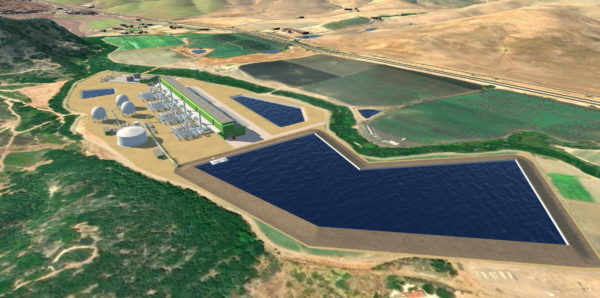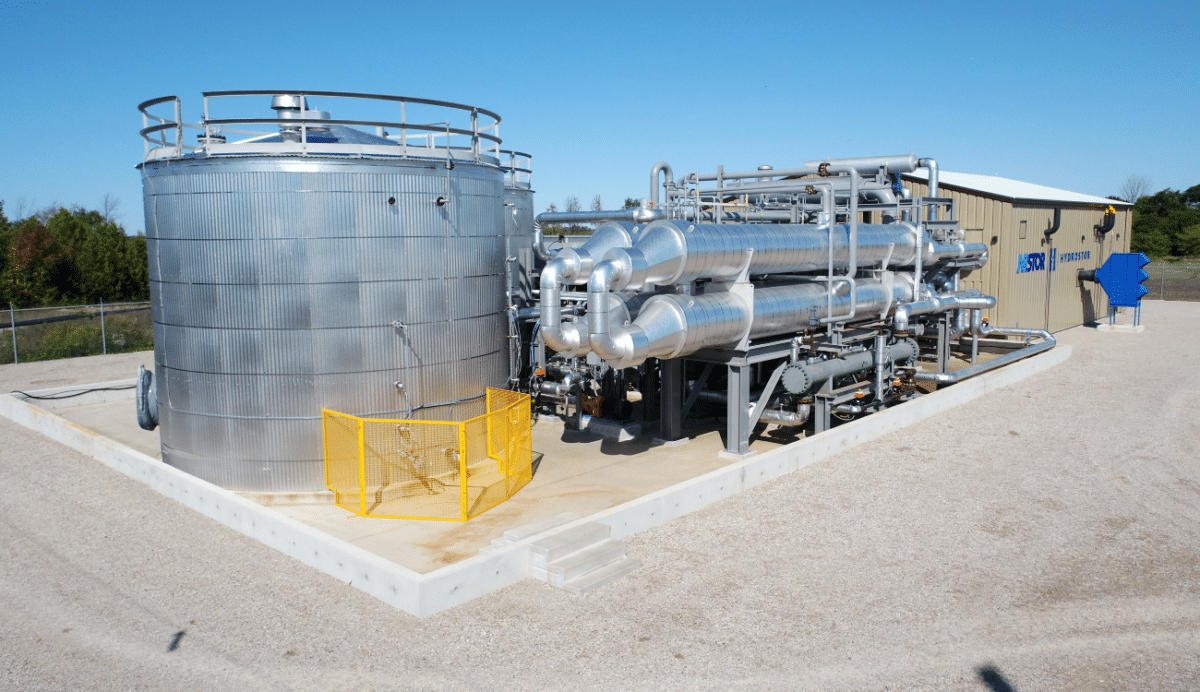Following its application for the 400 MW/3200 MWh Pecho Energy Storage Center, Hydrostor filed an application for an even larger 500 MW/4000 MWh, $975 million energy storage facility near Rosamond, California.
The Gem Energy Storage Center would be located in Kern County, a recent hotbed for development of utility-scale solar projects. The storage center would use Hydrostor’s Advanced Compressed Air Energy Storage (A-CAES) system.
Hydrostor’s technology features a four-step process for storing and dispatching energy. It first compresses off-peak or surplus energy from the grid, producing heated compressed air. Next, the heat is extracted from the air stream and stored inside a thermal store, saving the energy for later use. The compressed air is stored in a tank that uses a process called hydrostatic compensation to maintain constant pressure during operation. When the energy needs to be dispatched, pressure forces air to the surface, where it is then recombined with heat, and sent through an air turbine, producing dispatchable electricity.

Image: Hydrostor
The project is expected to make commercial operation date as early as 2026, playing a role in the region’s energy supply and reliability needs. The project is expected to help meet the growing share of renewable energy power peak demand for the greater Los Angeles region and the broader grid.
About 30 to 40 full-time permanent jobs, and roughly 700 four-year construction jobs, are expected when the project commences. Tax revenues of about $500 million are expected for Kern County.
Gem is planned to interconnect at the Whirlwind Substation under California Independent System Operator (CAISO) delivery, or at the planned Rosamond Switching Station, under Los Angeles Department of Water and Power (LADWP) delivery. In June 2021, the California Public Utilities Commission adopted a decision to procure 1,000 MW of long-duration energy storage, with durations of eight hours or longer.
Hydrostor said the A-CAES system can operate for 50 years with little to no degradation.
This content is protected by copyright and may not be reused. If you want to cooperate with us and would like to reuse some of our content, please contact: editors@pv-magazine.com.









By submitting this form you agree to pv magazine using your data for the purposes of publishing your comment.
Your personal data will only be disclosed or otherwise transmitted to third parties for the purposes of spam filtering or if this is necessary for technical maintenance of the website. Any other transfer to third parties will not take place unless this is justified on the basis of applicable data protection regulations or if pv magazine is legally obliged to do so.
You may revoke this consent at any time with effect for the future, in which case your personal data will be deleted immediately. Otherwise, your data will be deleted if pv magazine has processed your request or the purpose of data storage is fulfilled.
Further information on data privacy can be found in our Data Protection Policy.